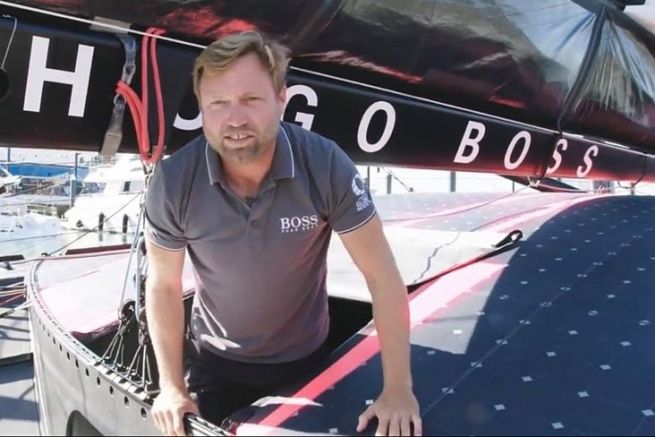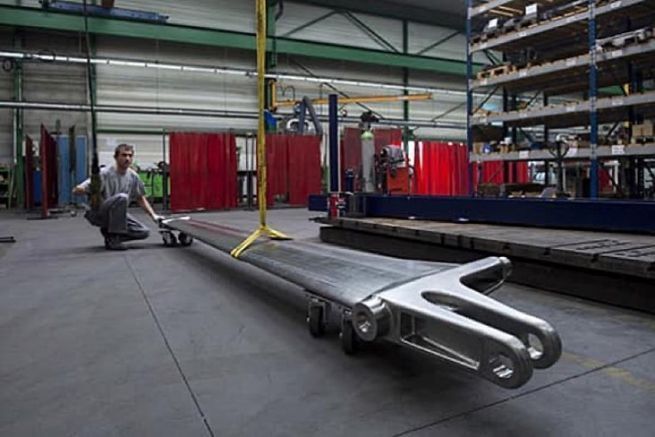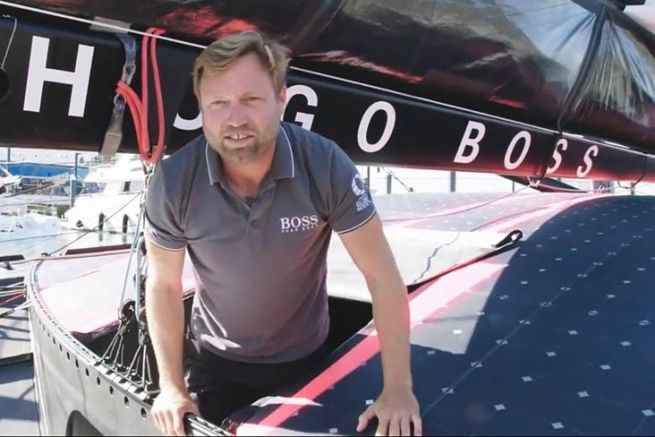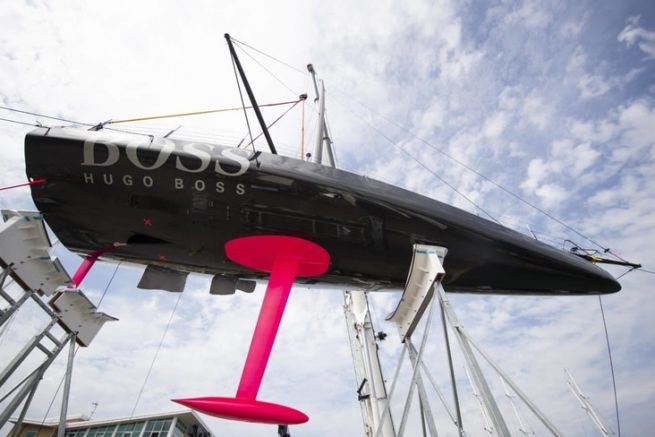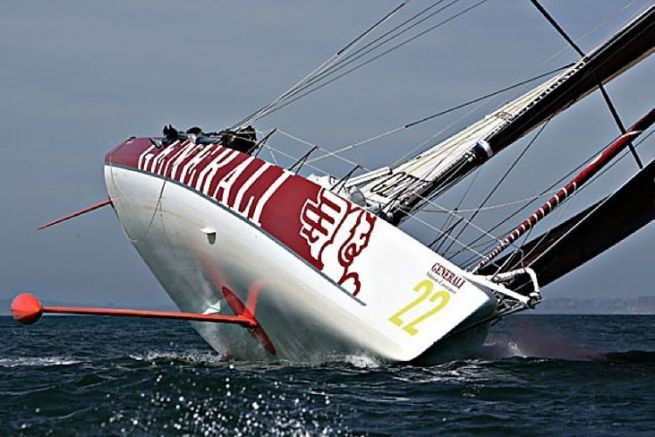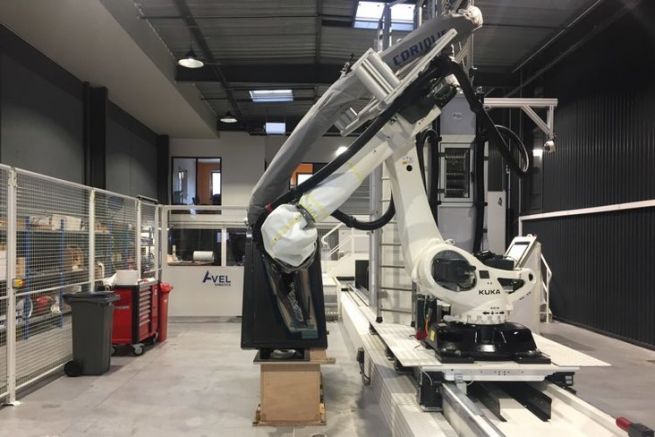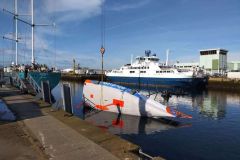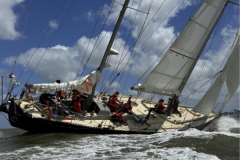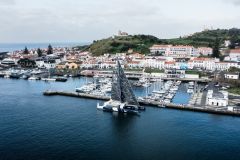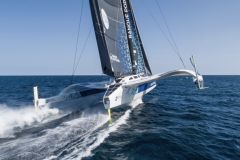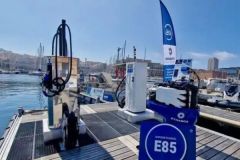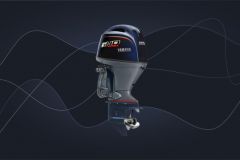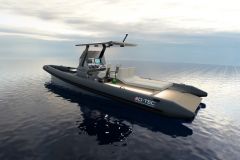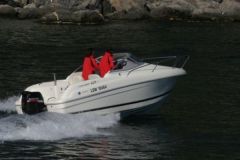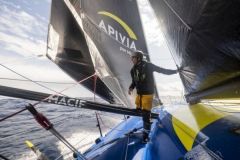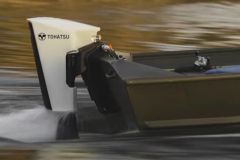When we talk about Hugo Boss, the IMOCA, the word "secret" comes up very quickly! So we investigated the components that were hidden under the bonnet, right at the entrance to its famous covered cockpit.
But what's under the hood?
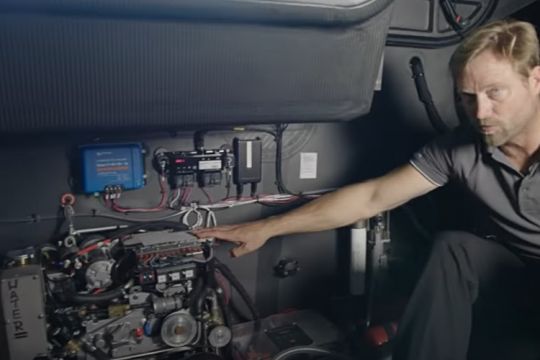
The all-electric choice was posted from the start by Alex Thompson. The "green" image of the courier is clearly visible on the deck, with its 19 m² of solar panels supplied by Gochermann. No doubt about it, the skipper assumes this turn!
Let's go inside to discover his other choices for producing his energy during the 2020 Vendée Globe. Under the deckhouse in the first living area, we discover a hood on the ground in front of the narrow door leading to the manoeuvring area at the foot of the mast. All the technical and energy concentration is in this space. Let's go into a little more detail.
An electric motor powered by 6 batteries
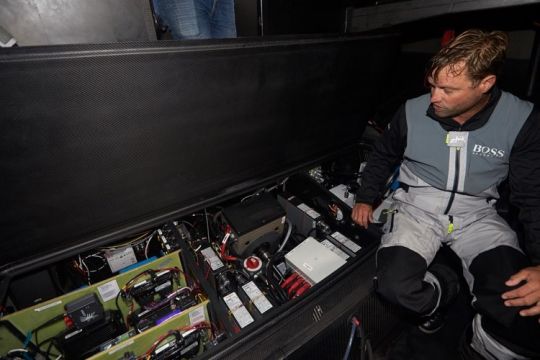
First visible, the biggest cube: it is the electric motor (Only two competitors have electric propulsion in the Vendée Globe 2020). The engine supplied by Oceanvolt weighs 40 kg (AXC racing version). Around this engine, we can see boxes, these are the batteries, 6 in number, they produce a total of 11.4 kWh and weigh 63 kg.
To complete its energy production, or even secure it, Alex Thompson has embarked a generator Ficher Panda AGT 4000, weighing about 90 kg and according to a press release from his team, 90 liters of diesel oil..
Comparison: the lighter electric drive!
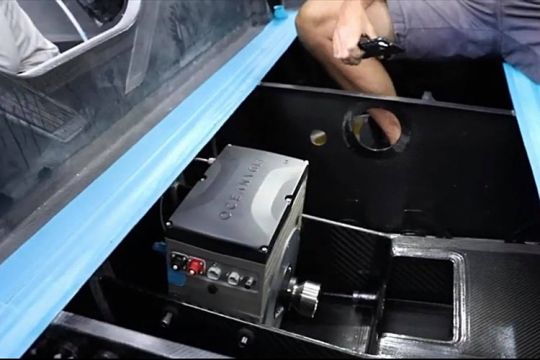
Why these choices? Ecology certainly, but above all weight dictated these choices... It's a racing boat, so let's make a small comparison with an IMOCA with a "classic" engine. What do you find in the bowels of these racers?
An internal combustion engine (diesel) equipped with an alternator, a battery bank and a larger reserve of diesel fuel.
So, let's do a little math to see why Hugo Boss chose to go electric.
- Hugo Boss: 40 kg engine + 63 kg batteries + 90 kg generator + about 77 kg diesel = 270 kg not to mention the 19 square meters of solar panels.
- On the other IMOCA: 160 kg of engine + 60 kg of batteries + 250 litres of diesel fuel (about 210 kg) = approx. 430 kg . And there are often hydrogen generators and solar panels as well.
160 kg difference... Such a difference is significant in this competition with a big C!
We can be sure that the next generation of IMOCA boats, the Welsh skipper's avant-garde choice, will be taken over.
